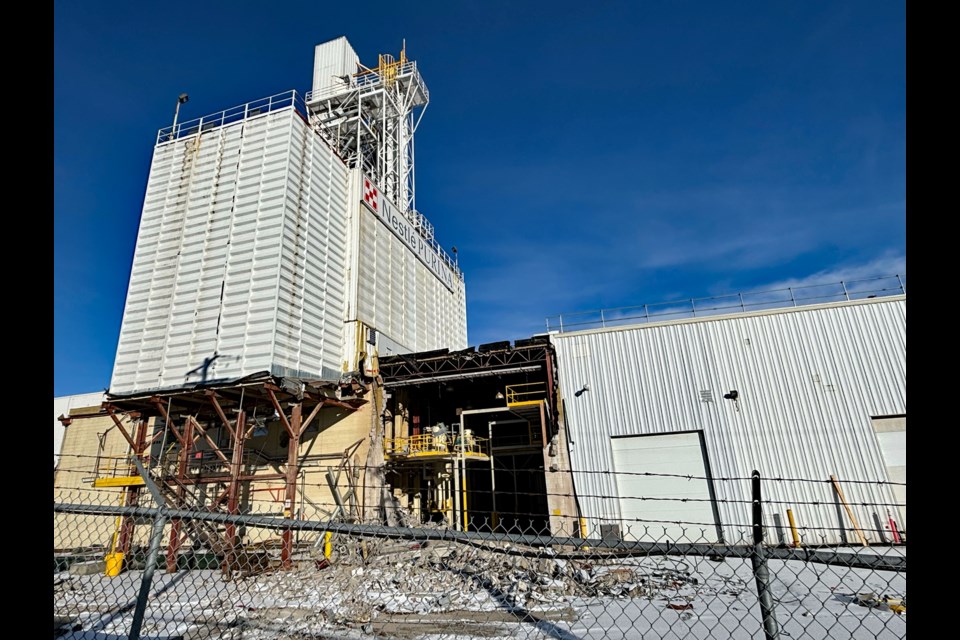INNISFAIL – After sitting vacant for more than eight years, a towering landmark in Innisfail for almost half a century is finally being demolished.
The demolition of Nestlé Purina PetCare’s mill tower, which is estimated to be about 120 feet or 36.5 metres in height, recently started following the town’s approval of necessary permits.
Meghan Jenkins, director of community services for the Town of Innisfail, confirmed to the Albertan last week that demolition permits had been issued to the company for a “partial demolition” at the south end of its property, primarily the bins and elevator equipment.
Jenkins said the demolition is scheduled to be complete by Feb. 15.
“I think the only thing that's constant in our world is change, and so it will certainly change the viewscape in that part of Innisfail,” said mayor Jean Barclay. “While Purina has been an integral part of the community for decades I’m pleased to hear that the distribution centre will carry on.”
The mill tower has been sitting unused since the fall of 2015 when Nestlé Purina PetCare decided to shut down the plant’s manufacturing operations in favour of making Innisfail its western Canada distribution centre; a decision that resulted in the layoffs of 44 employees.
According to local sources the plant was constructed in the mid-1970s by Western Pet Foods, which at that time was a division of United Grain Growers. The plant was then sold to Nestlé Purina in 1988, and the manufacturing of pet food continued until 2015.
The facility then morphed into a 120,000 square-foot distribution centre for western Canada. It currently has 34 employees.
“They are just the nicest people in the world. They're just the best of the best. It is a small but mighty team there,” said Rachel Douglas, the company’s senior manager of public relations and corporate communications.
Douglas said the reason for the mill tower’s ultimate demise comes because it has sat vacant for “many, many years.”
She said Purina had no other reason for the tower’s use, and because of its design it could not be used for storage.
In the meantime, the vacant building could have attracted unwanted problems, she said.
“It wasn't doing us any favours by sitting vacant. It's in an industrial area, which of course can attract a number of pests, which we are not interested in. It really makes sense to bring it down after all these years,” said Douglas. “By tearing it down it also gives us a lot more efficiencies for the trucks coming onto the site.
“It's going to give them more room to turn around. We’re going to be able to have more trucks on site. So, it's efficiency for us as well.”



